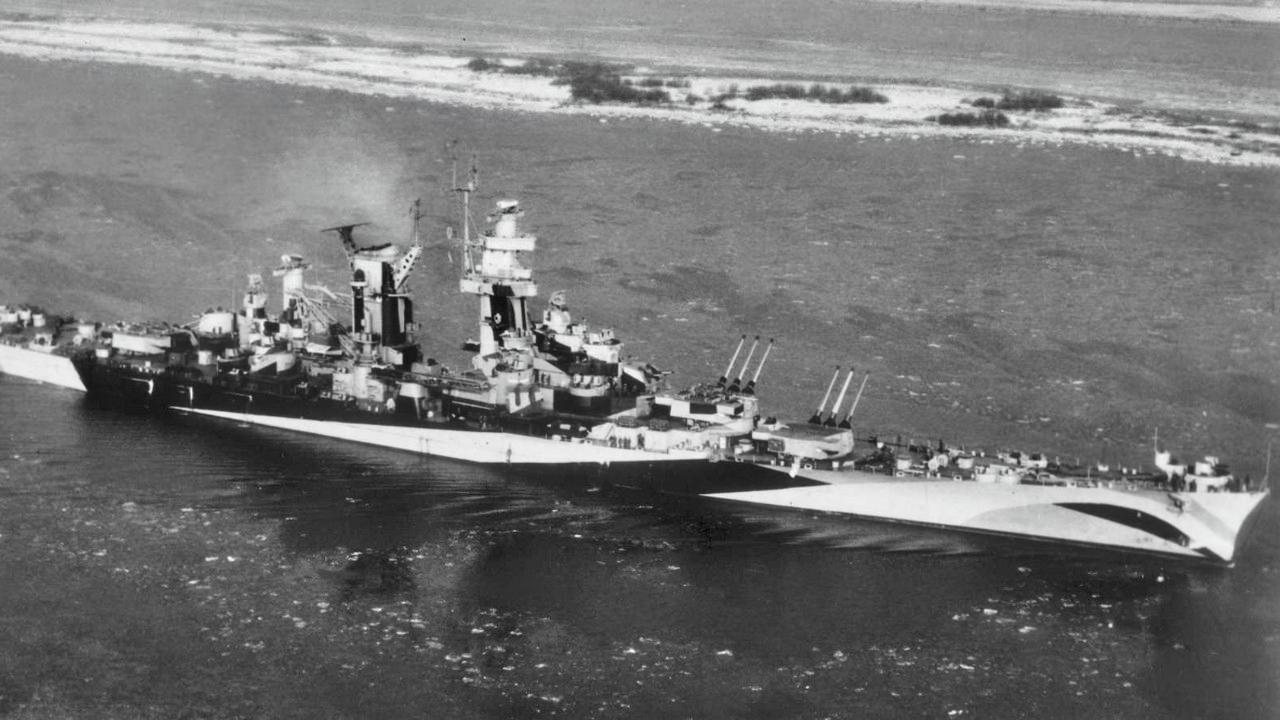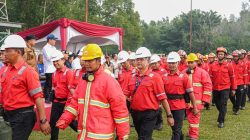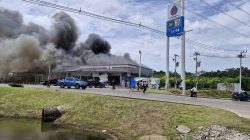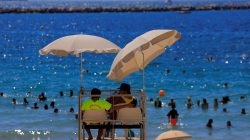Key Takeaways and Overview –The Alaska-class vessels were distinctive American warships during World War II, built as enormous “large cruisers” or battlecruisers.
-Their objective was to serve as “cruiser-killers,” aiming to track down and eliminate German and Japanese heavy cruisers using their formidable 12-inch guns.
-However, when the USS Alaska and USS Guam arrived in the Pacific in 1945, the enemy fleet they were built to confront had already been eliminated.
– Coming too late for their planned mission, they proved useful as anti-aircraft defenses for carriers before being rapidly stored away after the war, resulting in a strong but outdated legacy.
The Alaska-Class Did Not Succeed for Obvious Reasons
The 1930s marked a period when the United States, which had been isolationist, started to emerge from its passive stance as conflict escalated in Europe and the Pacific. Germany was rebuilding its military forces, and although newsreels portrayed Hitler as a minor figure, he aimed to enlarge his territory. Meanwhile, the Japanese Empire had developed a powerful and advanced navy and had invaded Manchuria and China.
After the Germans conquered France in just six weeks during 1940, the possibility of engaging the Germans in one ocean and the Japanese in another simultaneously became a serious concern for our government.
On July 19, 1940, only a month following France’s fall, the United States enacted the Vinson-Walsh Act, commonly referred to as theTwo-Ocean Navy Act.This legislation quickly expanded the United States Navy by 70 percent.
Although the law permitted the construction of 257 vessels, among its most significant features were the plans to build 18 aircraft carriers, seven battleships, and six Alaska-class cruisers.
Nevertheless, following the Japanese attack on Pearl Harbor on December 7, 1941, it became evident that the era of battleships was coming to an end, prompting the Navy to shift its focus toward constructing more aircraft carriers. The number of Alaska-class cruisers was reduced to only three.
The Alaska-class Battlecruisers
The Alaska-class cruiserswere larger than the standard cruiser but smaller than thebattleships.
They were created to respond to the GermanbattlecruiserScharnhorst equipped with her 11-inch cannons. The Japanese were also said to have constructed battlecruisers, although this remained unverified.
The typical American heavy cruiser, such as the 673-foot-long, 14,500-ton Baltimore-class, was equipped with (9) 8-inch cannons, (12) 5-inch guns, and (24) 20mm weapons for air defense.
The Alaska-class cruisers measured 808 feet in length and had a displacement of 29,771 tons, which was twice that of the typical cruiser. They were equipped with (9) 12-inch guns, (12) 5-inch guns, (56) 40mm guns, and (34) 20mm guns.
The current 12-inch cannons equipped by theAlaska-class battlecruiserswere an enhancement compared to the 14-inch cannons aboard the older battleships in the U.S. fleet.
The vessels traveled at a speed of 33 knots. They were built to act as destroyer-killers, capable of swiftly entering and exiting dangerous situations. The larger 12-inch cannons offered a substantial improvement compared to the 8-inch guns found on regular cruisers.
The uniqueness of her design led the Navy to label these vessels as “CB” for long cruisers rather than “CA” for heavy cruisers. Although battleships were named following states and cruisers after cities, the Alaska-class cruisers were named after U.S. territories.
Alaska-class Cruisers’ Combat History
The USS Alaska and USS Guam were eventually put into service in 1944. They made their way to the Pacific and were assigned to Task Force 58, joining the conflict in February and March 1945, respectively. Despite having missed most of the war against Japan, numerous battles still lay ahead.
At this point, the majority of Japan’s top Imperial Navy forces lay at the bottom of the Pacific. Therefore, the USS Alaska and the USS Guam never had the chance to engage Japanese cruisers, which was their intended target. Theywere obsoleteby the time they reached there.
Nevertheless, they carried out shore bombardment missions, and their weaponry offered outstanding anti-aircraft protection for the aircraft carriers. During the campaigns at Iwo Jima and Okinawa, the Japanese employed suicide pilots (kamikazes) to destroy American naval vessels.
When the CV-13, USS Franklin, was damaged by two bombs from a Japanese dive-bomber that set off aircraft that were fueled and ready for takeoff, the Alaska and the Guam, along with other vessels, were assigned to escort her to safety. A total of 926 crew members perished, the highest number in the war except for thebattleship Arizona.
Following the war, the vessels were placed in the “mothball fleet” and remained in a New Jersey shipyard until they were dismantled in the 1960s.
Since the 1940s,The discussion has centered on whether the Alaska-class cruiser was justified in terms of time and cost, and whether it failed to have a suitable purpose. The Alaska-class was designed for a role that had already become obsolete by the time they entered the war.
However, as the old saying states, “Hindsight is 20/20.” The Navy recognized a possible cruiser threat, and engineers quickly created a solution. They constructed a warship based on the data available to them at that time.
Nevertheless, they offered exceptional protection for the carriers, allowing battleships to focus on different responsibilities. The Navy created 12-inch guns for the vessel, which proved to be highly effective.
The timing was inappropriate, but the large Alaska-class battlecruisers were outstanding vessels.
About the Author:
Steve Balestrieri is a National Security ColumnistHe was a U.S. Army Special Forces NCO and Warrant Officer. Besides writing about defense, he reports on the NFL for PatsFans.com and is part of the Pro Football Writers of America (PFWA). His articles were frequently published in other military magazines.
More Military
We Came Close to the F-117 Stealth Fighter
We Came Very Close to Touching the YF-23 Black Widow II Stealth Fighter
We Came Close to Touching the D-21 Mach 3 Drone
Please follow National Security Journalon MSN for the most recent updates on defense, international relations, economics, and politics with a balanced perspective.







